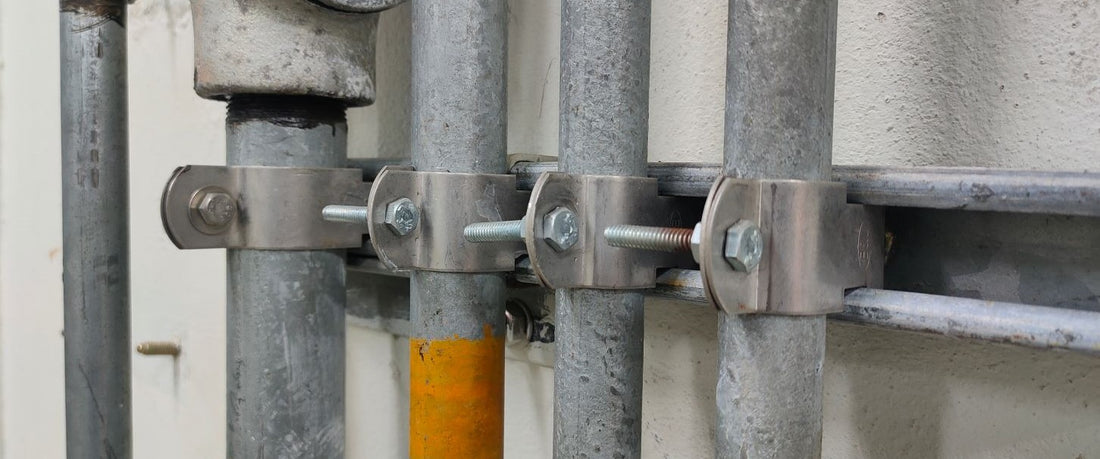
How to Install Strut Channel
Strut channels, often referred to as "strut," are an indispensable component in construction and engineering. Their versatility, durability, and ease of installation make them a popular choice for a wide range of applications. In this article, we will delve into what strut channels are, explore their various uses, and provide a step-by-step guide on how to install them.
What is Strut Channel?
Strut channels are metallic structural components designed for supporting, framing, and securing various building elements. Typically made of steel or aluminum, these channels feature a U-shaped cross-section with inward-facing lips. This unique design allows for the attachment of various components, such as pipes, conduits, and electrical fixtures, providing a robust and adjustable framework. For more information or other questions about strut channel, check out our FAQ here.
Where is Strut Channel Used?
Strut channels find applications across diverse industries and sectors due to their adaptability and strength. Some common uses include:
-
Electrical Installations: Strut channels serve as a reliable framework for mounting electrical conduits, junction boxes, and cable trays.
-
HVAC Systems: In heating, ventilation, and air conditioning (HVAC) installations, strut channels support ductwork and other components, ensuring a stable and secure system.
-
Plumbing: Strut channels are employed in plumbing systems to support pipes, ensuring they are well-organized and securely fastened.
-
Mechanical Equipment: Heavy-duty machinery and equipment can be mounted on strut channels, providing a stable and secure platform.
-
Solar Panel Installation: Strut channels are widely used in solar panel installations to support and secure panels in various configurations.
-
Construction Projects: Strut channels play a crucial role in construction projects, providing structural support for elements such as trapeze hangers and framing.

How to Install Flex Strut Channel
Installing strut channels is a straightforward process that can be accomplished with basic tools. Here's a step-by-step guide:
Materials
- Flex-Strut Channels
- Strut Nuts & Bolts
- Channel brackets
- Power drill
- Screwdriver
- Level
- Measuring Tape
1. Measure & Mark
Begin by measuring and marking the locations where the strut channels will be installed. Use a level to ensure accuracy.
2. Prepare the Channels
Cut the strut channels to the desired lengths using a saw. If needed, use a deburring tool to remove any sharp edges.
3. Mount Channel Brackets
Attach channel brackets to the mounting points using screws or bolts. Ensure that the brackets are securely fastened to the surface.
4. Attach the Strut Channels
Slide the strut channels into the channel brackets. Secure them in place using nuts and bolts, ensuring a tight fit.
5. Adjust and Level
Use a level to ensure that the strut channels are horizontally and vertically aligned. Make any necessary adjustments to achieve a level installation.
6. Secure Additional Components
Attach additional components such as conduit clamps, pipe hangers, or other fixtures to the strut channels using nuts and bolts.
7, Tighten Connections
Double-check all connections and tighten nuts and bolts as needed to ensure a secure and stable installation.

Flex-Strut Channel from Fasteners Plus
Every project requires different channel setups. That's why Fasteners Plus offers many strut channel options from Flex-Strut catered to specific light structural support applications. Channel sections range in size and depth for your application needs, as shown below:
-
Solid Strut Channel: These products contain zero holes or slots and makes confining plumbing, wiring, and other mechanical components easy to do, while boasting a smooth clean finish.
-
Short-Slotted Strut Channel: This standard size of steel slotted channel comes in a variety of makes and sizes, supporting wiring, plumbing, and other mechanical components.
-
Long-Slotted Strut Channel: With Long-Slotted Strut Channel, the longer holes allow more wiggle room for installations that require suspension such as a trapeze. These are ideal to use (with threaded rods) in making adjustments as needed.
- Strut Channel with 9/16" Holes: Lastly, this channel contains 9/16" punched holes along the base to use with threaded rods to hang and support plumbing, mechanical work, ceiling grid, and electrical components like conduit.
We also offer a variety of strut channel fittings and strut channel hardware for you to create stable connections for your next project. Choose the right type of strut channel fitting, including channel brackets, beam clamps, clevis fittings, pipe straps, and more, to support your channel structures. Our fittings are made with many different finishes such as Aluminum, Hot-Dipped Galvanized, 304 Stainless Steel, and 316 Stainless Steel. Be sure to include these components in your next purchase of strut channel products.






